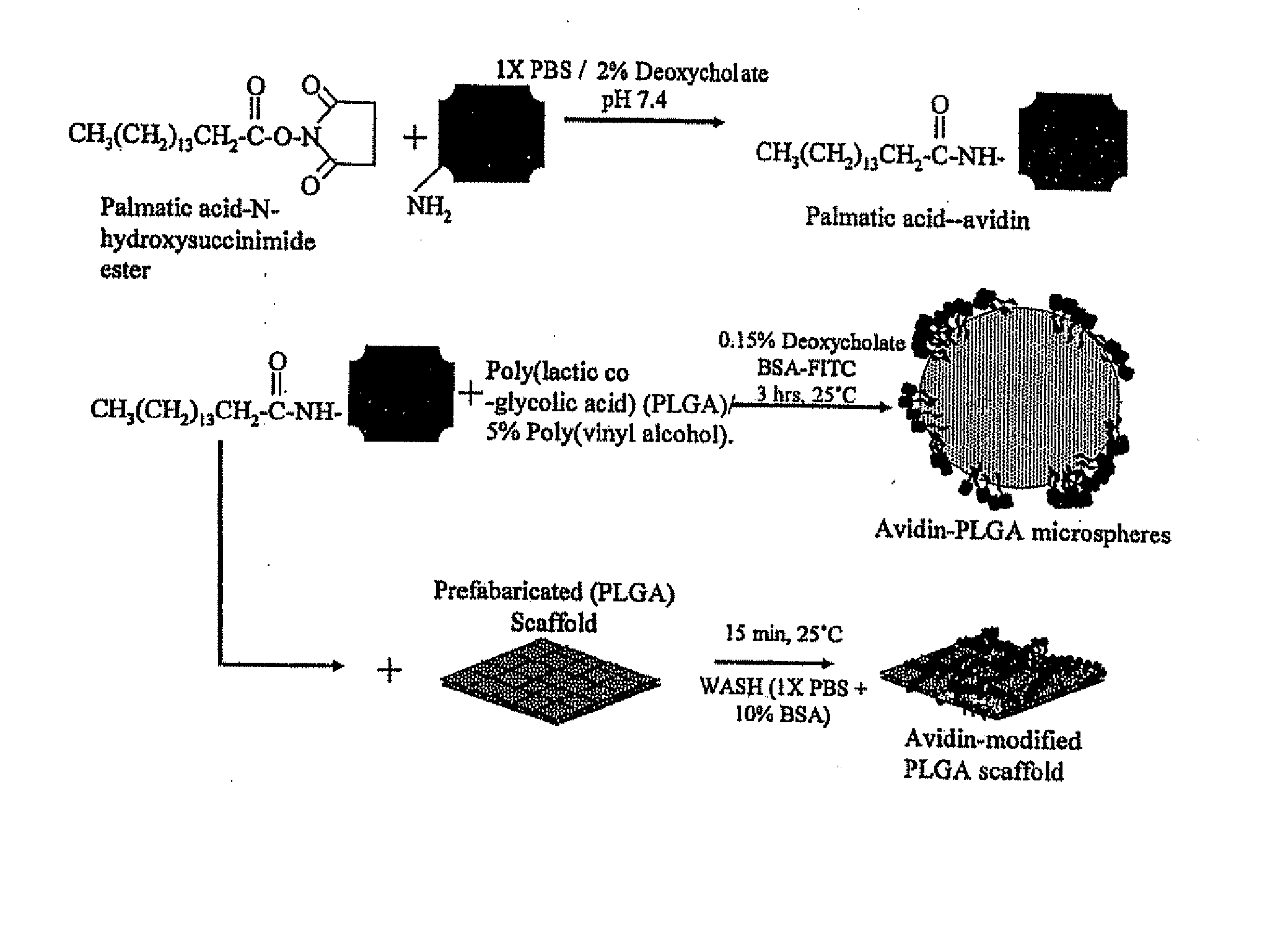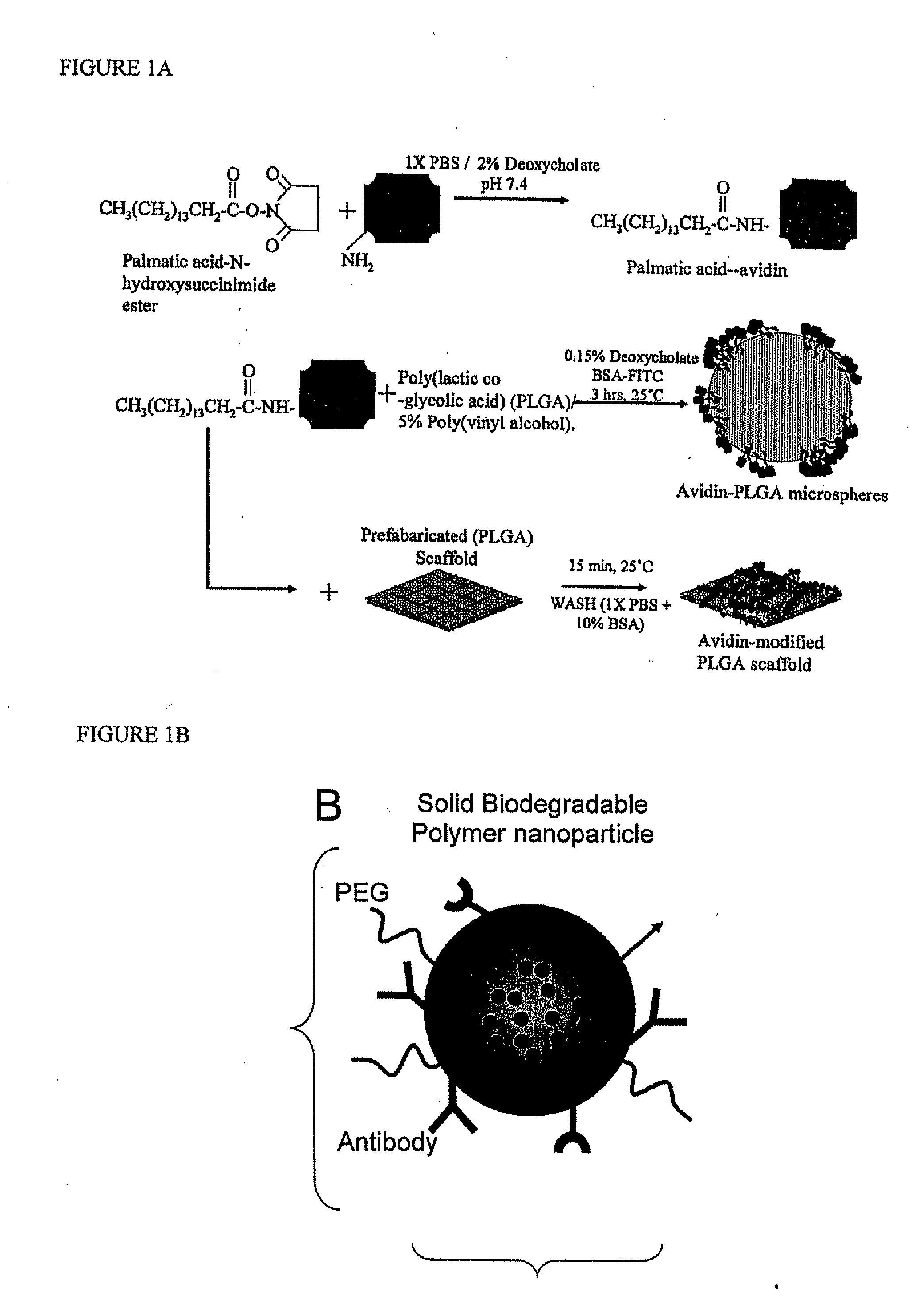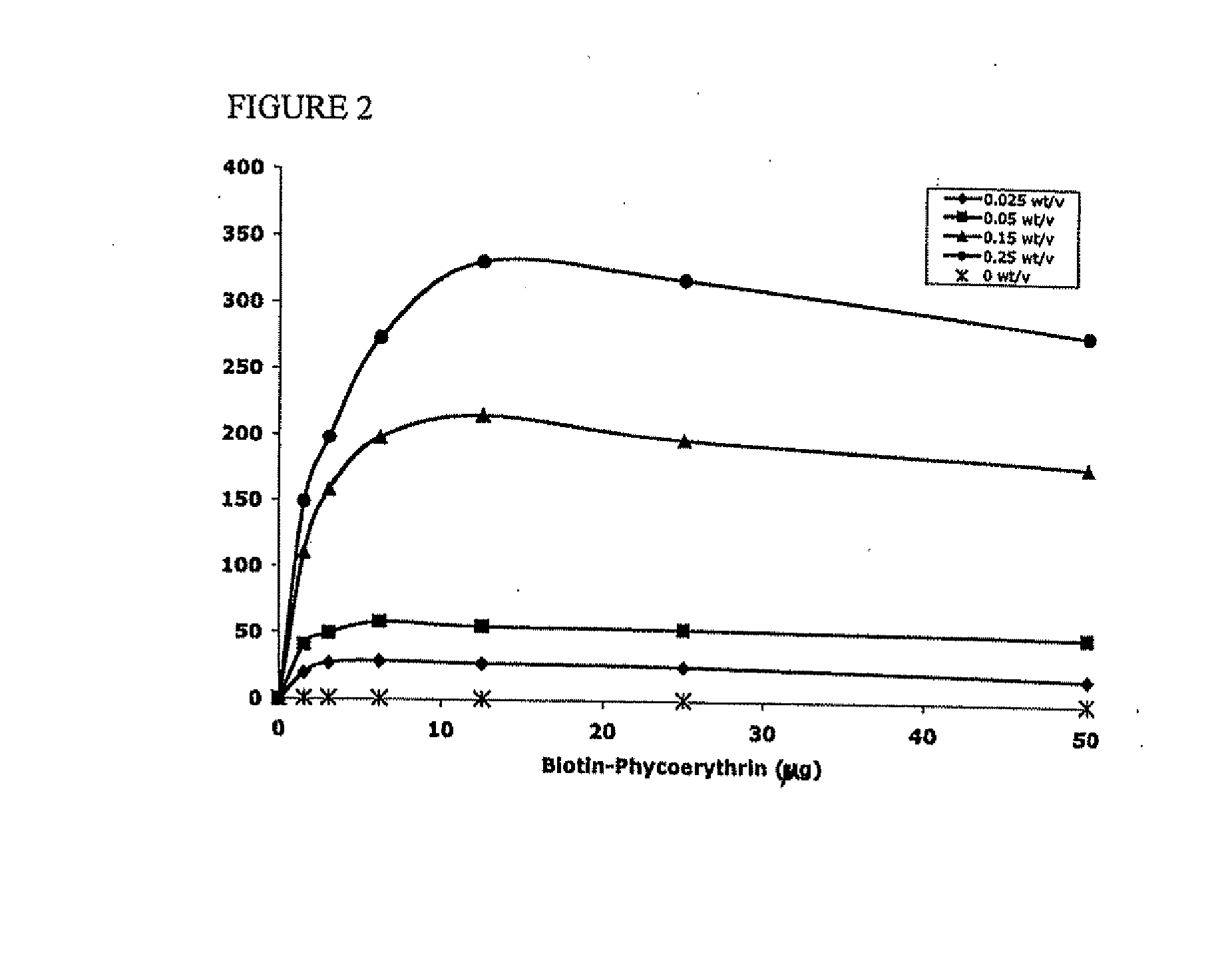Methods of Treatment with Drug Loaded Polymeric Materials
a polymer material and loading technology, applied in the field of polymer microparticles, can solve the problems of reducing the useful number, reducing specificity, and many of the disadvantages of these techniques, and achieve the effects of high loading/high density of molecules, efficient incorporation, and convenient attachmen
- Summary
- Abstract
- Description
- Claims
- Application Information
AI Technical Summary
Benefits of technology
Problems solved by technology
Method used
Image
Examples
example 1
Surface Modification of Biodegradable Polyesters with Fatty Acid Conjugates for Improved Drug Targeting and Modification of Tissue Engineering Materials
[0110] Materials
[0111] PLGA with an inherent viscosity of 0.59 dL / g, lot D02022 was supplied from Birmingham Polymers, Inc. Polyvinyl alcohol (Mwaverage 30-70 Kd), Palmitic acid-N-hydroxysuccinimide ester (NHS-Palmitate), avidin (affinity purified) from egg white and biotin-B-phycoerythrin, biotin immobilized on agarose were all obtained from Sigma Chemical Co. Methylene Chloride and trifluoroethanol were of chromatography grade and supplied by Fischer Chemicals. All other reagents were of reagent grade and used as received.
[0112] Preparation of Avidin-Palmitic Acid Conjugates
[0113] Avidin at 10 mg / ml was reacted with 10-fold excess of NHS-Palmitic acid in PBS containing 2% deoxycholate buffer. The mixture was sonicated briefly and gently mixed at 37° C. for 12 hours. To remove excess fatty acid and hydrolyzed ester, reactants we...
example 2
Non-Specific Targeting with LPS for Delivery of a Protein
[0146] Lipopolysaccharide, LPS, represents the main outer membrane component of Gram-negative bacteria and plays a key role during severe Gram-negative infection. LPS is recognized by the TOLL-like receptor 4 and is one of a class of ligands called PAMPS (Pathogen Associated Molecular Patterns) which target TOLL receptors associated with innate immunity (on-specific immunity). These are very effective components of adjuvants that help prime the innate immune response against antigens for vaccination. As a result they are critical components of adjuvants such as complete Freunds adjuvant that stimulate a vigourous immune response. LPS is a polysaccharide backbone with pendant fatty acids.
A. Vaccination by Subcutaneous Administration
[0147] In this particular application ovalbumin antigen is encapsulated and mice are vaccinated by subcutaneous administration with particles that have been modified with LPS and the results comp...
example 3
Enhanced Targeting of Microparticles through the Use of Star or Branched PEG Linkers
[0155] An efficient method which facilitates simple attachment of T cell antigens to a macromolecular carrier which encapsulates a high density of immunomodulatory drug was developed. Antigen-presenting drug carriers were constructed from a non-toxic, multi-branched polyethylene glycol / polyamidoamine (PEG / PAMAM) dendritic vehicle. T cell antigens were tethered to the branches of this vehicle while drug was efficiently encapsulated in the core PAMAM which acts as a ‘nanoreservoir’ of drug. The potency of these vehicles in modulating the T cell response with antibodies and major histocompatability ligands to specific T cell populations was demonstrated. Antigen-presenting carriers encapsulating the antimitogenic drug, doxorubicin bound their target T cells with avidities 10-100 fold greater than free antigen and consistently downregulated the T cell response, while drug-free constructs elicited strong...
PUM
| Property | Measurement | Unit |
|---|---|---|
| sizes | aaaaa | aaaaa |
| length scale | aaaaa | aaaaa |
| diameter | aaaaa | aaaaa |
Abstract
Description
Claims
Application Information
 Login to View More
Login to View More - R&D
- Intellectual Property
- Life Sciences
- Materials
- Tech Scout
- Unparalleled Data Quality
- Higher Quality Content
- 60% Fewer Hallucinations
Browse by: Latest US Patents, China's latest patents, Technical Efficacy Thesaurus, Application Domain, Technology Topic, Popular Technical Reports.
© 2025 PatSnap. All rights reserved.Legal|Privacy policy|Modern Slavery Act Transparency Statement|Sitemap|About US| Contact US: help@patsnap.com



